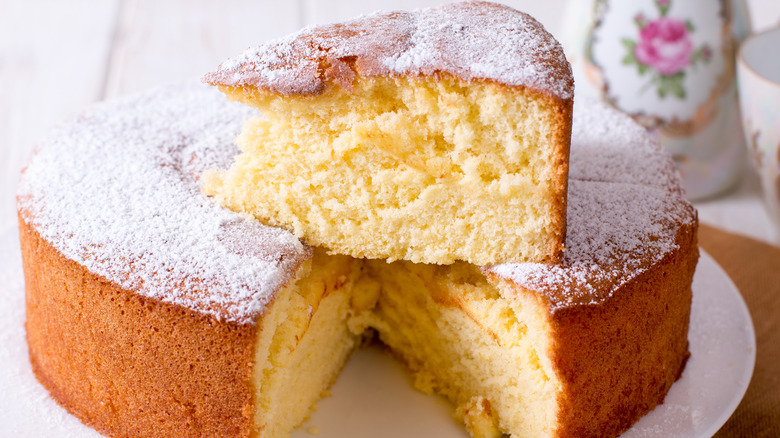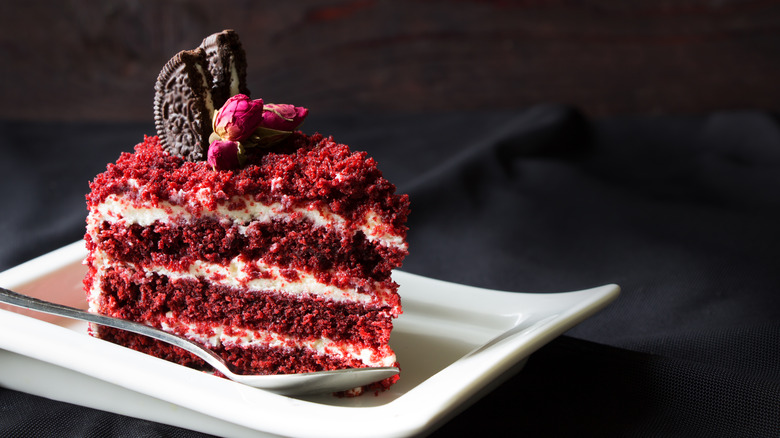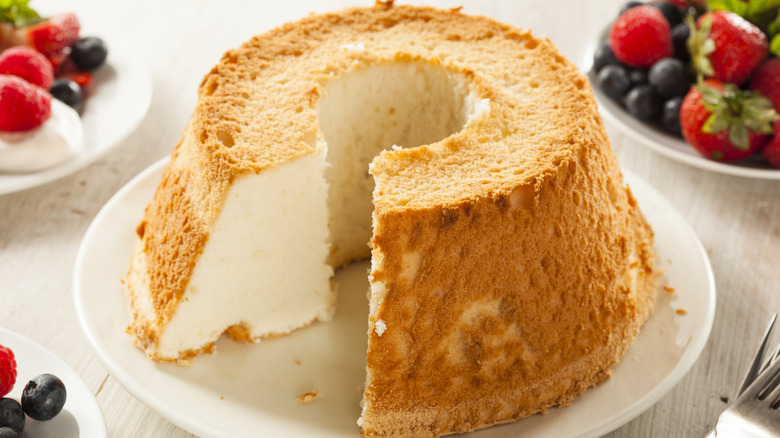Butter Cake Vs Foam Cake: What's The Difference?
We don't think we would be wrong if we said most of us are not likely to have met a cake we didn't like; but unless we were into studying the theory behind baking in general and cake making in particular, we probably wouldn't know too much about this classic dessert.
This is not to say we're not familiar with the different flavors and shapes that cakes can come in, we just wouldn't know offhand which slightly different ingredients are used to make different types of cakes, and how these nuances determine the cakes' types and the textures.
For instance, some of us may be into cakes that are denser, and with a heavier crumb, while others may enjoy cakes that are lighter and airier. As a result, one type of cake is better able to take the additional weight of a good, sturdy frosting, while the other may be best when covered with a light buttercream or a meringue, per The New York Times. The differences come down to what rising agent is used, and whether there is any butter or shortening in the mix.
Butter Cakes need a chemical leavening agent
Some cakes call for butter and sugar to be creamed — or mixed together until the butter and sugar are light and fluffy per Land O'Lakes – as a first step; if that's what the recipe calls for, then the recipe would be for a butter cake.
Bakerpedia says butter cake is a part of the American culinary tradition. To make this type of cake, in addition to the butter and sugar, you'll add flour, eggs, sugar and salt, milk, as well as the leavening agents baking soda and/or baking powder, the latter of which are critical to giving the cake lift and to keep it from becoming too stodgy, per Preppy Kitchen. While it's categorized as "American," the cake was actually first made in England where it was called a pound cake — which called for equal amounts of flour, shortening, sugar, and eggs. A version of it was also made in France, where it was called "quatres-quarts" (via Bakerpedia).
Cakes made with fat — and these include butter, shortening, margarine, and oil — can come in a variety of flavors, including the much-loved carrot and red velvet, per All Recipes, and their dense, but moist crumb makes these cakes a dream to frost.
Foam cakes rely on well-whipped eggs
Those of us with a sweet tooth who need to cut fat from our diets are likely to reach for a slice of foam cake, which we'd commonly know from its varieties, Angel-food cake, sponge cake, or chiffon cake. While butter cakes rely on chemical agents like baking powder and baking soda to make them light, foam cakes lean into the use of well-beaten eggs to give them both air and lift. Southern Living says some foam cakes — like Angel-food and chiffon cakes (per The Washington Post) — start out with whipped egg whites so that they are able to rise as they bake.
The secret to a good foam cake is to beat whole eggs or egg whites until the egg mixture is primed for sugar to be added in. It is only after this that other ingredients, including cake flour, salt, and flavorings like vanilla or almond extract can be folded in (via The Washington Post).


